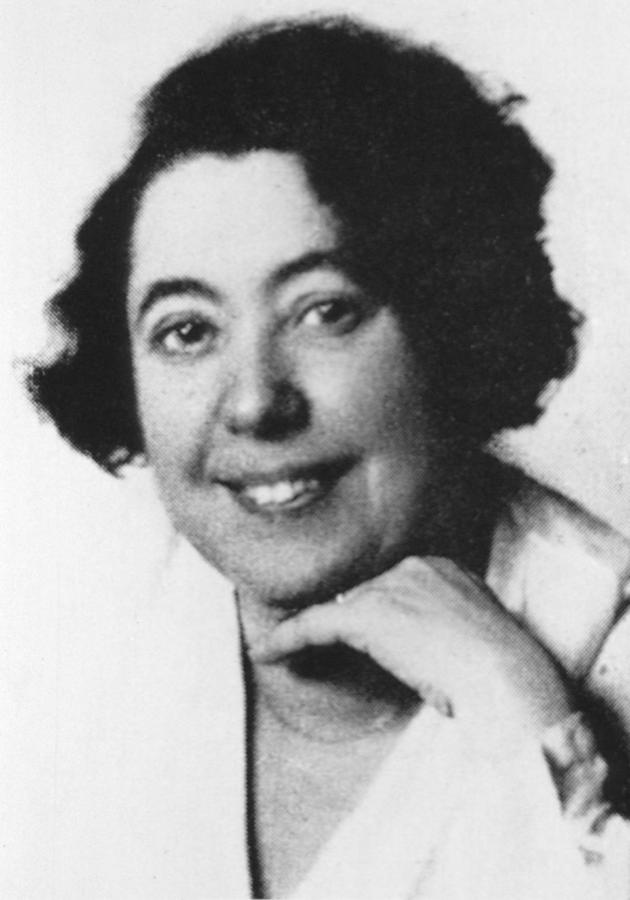
| Version | Summary | Created by | Modification | Content Size | Created at | Operation |
|---|---|---|---|---|---|---|
| 1 | Conner Chen | -- | 602 | 2022-12-06 01:58:04 | | | |
| 2 | Conner Chen | Meta information modification | 604 | 2022-12-08 09:18:55 | | |
Video Upload Options
1. Introduction
Lina Solomonovna Stern (or Shtern; Russian: Лина Соломоновна Штерн; 26 August 1878 – 7 March 1968) was a Soviet biochemist, physiologist and humanist whose medical discoveries saved thousands of lives at the fronts of World War II. She is best known for her pioneering work on the blood–brain barrier, which she described as hemato-encephalic barrier in 1921.[1]
2. Life and Career
Born in Libau in the Russian Empire (today Liepāja, Latvia) into a Jewish family and educated in Geneva, Switzerland , she pursued an academic career and performed original research in biochemistry and in the neurosciences. From 1918 onwards she was the first woman awarded professional rank at the University of Geneva, being a Professor of chemio-physiology, and researching cellular oxidation.[1]
In 1925 she had emigrated to the Soviet Union out of ideological convictions.[1] From 1925 to 1948 she served as Professor of the 2nd Medical Institute.
From 1929 to 1948, Stern was Director of Institute of Physiology of the USSR Academy of Sciences. Among many problems Stern and her group worked on were longevity and sleep. Under her leadership, multidisciplinary groups of colleagues worked on the problems of the hemato-encephalic and histohematic barriers. The results of this work were later implemented in clinical practice and saved thousands of lives at the fronts of World War II. In 1939 she became the first female full member of the Academy (academician).[1][2] In 1943 she won the Stalin Prize.[3]
3. Research on the Blood–Brain Barrier
The blood–brain barrier refers to a diffusion barrier formed by the endothelial walls of the blood vessels and capillaries in the brain.[4] This barrier prevents most substances in the blood from entering the brain while allowing small molecules like oxygen and carbon dioxide to diffuse freely. While working at the University of Geneva, Stern published a series of studies demonstrating the existence of the blood-brain barrier with colleague Raymond Gautier.[5][6] Beginning in 1918, the two performed systematic experiments on the movement of various substances from the blood into the nervous system and estimated the extent to which these substances were able to permeate the brain. From these studies they were able to conclude that there exists a barrier between the blood and brain, which they termed in French "barrière hématoencéphalique".[7] In a 1934 paper, Stern also independently introduced the notions of barrier selectivity and barrier resistance, realizing that the blood–brain barrier both selectively allows certain substances to enter the brain and protects the internal milieu of the brain from that of the blood.[8] Today these are acknowledged as two of the main functions of the blood–brain barrier.
4. Activism and Persecutions
A member of the Women's Anti-Fascist Committee and the Jewish Anti-Fascist Committee (JAC) since the outbreak of World War II, Stern was the sole survivor out of 15 arrested and convicted to death sentence when the JAC was eradicated in January 1949. Her death sentence was changed to a prison term, followed by five-year exile.[1] The exile was in Dzhambul (current Taraz), Kazakhstan.
5. After Rehabilitation

After Stalin's death, life became easier. Finally she was exonerated by the Presidium, returned to Moscow and 1954–1968 she headed the Department of Physiology at Biophysics Institute.[9] She often spoke of anti-Semitism denying in testimony that the Soviet Union was her "motherland". She renounced the Bolshevik revolution putting it in the context of discrimination against Jewish people.[10]
References
- Lina Stern: Science and fate by A.A. Vein. Department of Neurology, Leiden University Medical Centre, Leiden, The Netherlands http://www.bri.ucla.edu/nha/ishn/ab44-2006.htm
- Women in Medicine: An Encyclopedia by Laura Lynn Windsor, pp. 188–189
- Lina Stern (1878–1968): Physiologin und Biochemikerin, erste Professorin an der Universität Genf und Opfer stalinistischer Prozesse (in German) http://www.saez.ch/docs/saez/archiv/de/2005/2005-26/2005-26-513.pdf
- Ballabh, Praveen; Braun, Alex; Nedergaard, Maiken (1 June 2004). "The blood–brain barrier: an overview". Neurobiology of Disease 16 (1): 1–13. doi:10.1016/j.nbd.2003.12.016. ISSN 0969-9961. PMID 15207256. https://dx.doi.org/10.1016%2Fj.nbd.2003.12.016
- Davson, Hugh (1989), "History of the Blood-Brain Barrier Concept" (in en), Implications of the Blood-Brain Barrier and its Manipulation, Springer US, pp. 27–52, doi:10.1007/978-1-4613-0701-3_2, ISBN 9781461280392 https://dx.doi.org/10.1007%2F978-1-4613-0701-3_2
- Davson, H (1976-02-01). "Review lecture. The blood-brain barrier" (in en). The Journal of Physiology 255 (1): 1–28. doi:10.1113/jphysiol.1976.sp011267. ISSN 0022-3751. PMID 1255511. http://www.pubmedcentral.nih.gov/articlerender.fcgi?tool=pmcentrez&artid=1309232
- Ribatti, Domenico; Nico, Beatrice; Crivellato, Enrico; Artico, Marco (2006-01-25). "Development of the blood-brain barrier: A historical point of view" (in en). The Anatomical Record Part B: The New Anatomist 289B (1): 3–8. doi:10.1002/ar.b.20087. ISSN 1552-4906. PMID 16437552. https://dx.doi.org/10.1002%2Far.b.20087
- Saunders, Norman R.; Dreifuss, Jean-Jacques; Dziegielewska, Katarzyna M.; Johansson, Pia A.; Habgood, Mark D.; Møllgård, Kjeld; Bauer, Hans-Christian (2014). "The rights and wrongs of blood-brain barrier permeability studies: a walk through 100 years of history" (in English). Frontiers in Neuroscience 8: 404. doi:10.3389/fnins.2014.00404. ISSN 1662-453X. PMID 25565938. http://www.pubmedcentral.nih.gov/articlerender.fcgi?tool=pmcentrez&artid=4267212
- "ISHN 2006 Annual Meeting -- Abstract 44". http://www.bri.ucla.edu/nha/ishn/ab44-2006.htm.
- The Black Book, New York: Duell, Sloan and Pearce, 1946. The Black Book: The evil, universal murder of Jews By the German-Fascist Aggressors In the temporarily occupied regions Of the Soviet Union And in the Camps of Poland During the War 1941 – 1945, Compiled and Edited by Vasily Grossman Ilya Erenburg, Kiev: M.I.P. “Oberig”, 1991.
_(8492388852).jpg)
Location: Liepāja, Russian Empire




